Finnish Food Dishes: Basic Overview
Common Ingredients
Common Cooking Methods
Courses
Meals
Key Taste
Eating Etiquette
Meal Presentation
Culinary Festivals
Influence and Fusion
Popular Types of Finnish Dishes
-
Soups and Stews
Nourishing soups and stews are popular dishes for the main course in Finland.
These dishes are typically prepared with vegetables, meat or fish, and dairy products.
With a side of bread, Finnish soups and stews are ideal for both daily meals and celebrations.
-
Snacks
Snacks in Finland include many types of dishes, especially fried dishes.
These dishes can be sweet or savory, depending on the main ingredients.
Finnish snacks are also great appetizers, street food, and fast food dishes.
-
Cakes and Pastries
There are many types of cakes and pastries in Finland.
These dishes are usually made with wheat flour or rye flour, milk, butter, and sugar.
These dishes can be baked or deep-fried.
Many Finnish cakes and pastries are must-have treats for special holidays and occasions.
Finnish dishes are specialties widely prepared and enjoyed in Finland, a country in Northern Europe. These dishes are strongly influenced by the broader Nordic cuisine, especially by the delicacies of Sweden.
Most dishes in Finland are prepared with fresh and locally sourced ingredients that vary according to the season. Seafood is the year-round staple, while rye bread is a well-liked staple dish.
I’m going to share with you many interesting facts about traditional Finnish food, including its common traits, international popularity, and healthy aspects.
Next, I will provide a detailed overview of the best 19 dishes in Finland before diving into the core features of Finnish cuisine and suggesting popular beverages to accompany local dishes.
19 Fabulous Finnish Dishes
Among the many Finnish dishes, this guide includes the best 19 options. Check out my advanced filters for a smoother reading experience; there are options regarding alphabetical sorting, main ingredients, taste, cooking methods, dish types, courses, and global popularity.
In addition, there are filters based on specific culinary styles, such as traditional, national, street food, fusion, exotic, and vegetarian options. Use them to navigate the content more easily.
Ruisleipä
- National
- Traditional
Ruisleipä, or rye bread, is among the most essential dishes in Finnish cuisine. From humble abodes to fancy restaurants, it is present in many settings as the ultimate staple dish.
Compared to other types of bread, Finnish rye bread has a dense texture, a dark color, and a slightly tangy taste due to being made from sourdough. Traditionally, these loaves are baked in large, round forms with a hole in the middle.
A typical Finnish breakfast consists of a loaf of rye bread, a few slices of ham and cheese, and some vegetables. Other classic accompaniments to ruisleipä include butter, cheese, cold cuts, stews, and soups.
Karjalanpiirakka
- National
- Street Food
- Traditional
Karjalanpiirakka, literally “Karelina pie,” is a beloved Finnish pasty that hails from Karelia. It is as ubiquitous in Finland as pizza in Italy or baguettes in France.
The crisp crust of karjalanpiirakka is usually made from rye or wheat. The filling choices are numerous, such as barley, buckwheat, rice porridge, and mashed potatoes, with the last two being the most popular options.
In Finland, there is an unspoken rule of always eating karjalanpiirakka with egg butter (a spread of butter and chopped hard-boiled eggs). This Finnish specialty is the owner of the Traditional Specialty Guaranteed (TSG) status issued by the EU.
Lohikeitto
- National
- Traditional
Lohikeitto is a rich Finnish soup prepared with salmon filets, diced potatoes, carrots, herbs, and fish stock. The stock is always enriched with heavy cream or milk and made fragrant with dill.
Almost all Finnish people grow up eating creamy lohikeitto with rye bread for lunch and dinner. One of the most popular varieties of kalakeitto (fish soup), this salmon soup is also available in Sweden under the name of laxsoppa.
Karjalanpaisti
- Traditional
Karjalanpaisti, literally “Karelian stew” or “Karelian hot pot,” is a traditional Finnish dish with roots in the Karelia region. It is made by slow-cooking a mixture of meats (such as pork, beef, and lamb), with onions, root vegetables, and spices.
As it takes hours to prepare karjalanpaisti, this Finnish stew is mainly reserved for dinner and special occasions. In return, the deeply savory and addictive flavor of Karelian stew is an excellent comfort food for Finnish people to share with loved ones.
Karjalanpaisti used to be costly due to the scarcity of meat, but it is now a common dish to serve with bread, boiled potatoes, and pickles.
Korvapuusti
- Traditional
Korvapuusti is the Finnish version of cinnamon rolls, which are the highlight of kaffeepause (Finnish coffee break). Curiously, its name means “a slap in the ear,” apparently referring to its ear-shaped form.
Korvapuusti is made from yeast dough infused with cinnamon, sugar, and butter. Unlike their sweeter American counterparts, korvapuusti is modestly sweetened and leans toward the aromatic side.
Finnish bakers skillfully roll sheets of yeast to create a distinct shape and bake the cinnamon buns in the oven, occasionally topping them with pearl sugar or crushed sugar cubes.
Mustikkapiirakka
- Traditional
Mustikkapiirakka is the Finnish take on blueberry pies. It features a buttery, custard-like crust filled with wild blueberries harvested from Finland’s vast forests.
Mustikkapiirakka is occasionally topped with a lattice or crumble and served with vanilla sauce or ice cream. The wild blueberries used in it are smaller yet much more flavorful than their cultivated counterparts.
Finnish blueberry pies are especially popular during the berry-picking season in late summer, embodying the local tradition of foraging and the deep connection to nature.
Graavilohi
- Traditional
Graavilohi is a traditional Finnish delicacy prepared by curing fresh salmon the medieval Nordic way. It is also known as graved salmon in English or gravlax in Swedish.
People prepare graavilohi by marinating salmon in a mixture of salt, sugar, and dill for many hours or a few days, imparting a delicate dill fragrance and a silky texture to the salmon. Traditionally, graavilohi was made by burying the fish in the sand.
Thin slices of graavilohi are a delicious appetizer to serve with mustard sauce (hovmästarsås) on top of rye bread.
Leipäjuusto
- Traditional
Leipäjuusto, literally “bread cheese,” is a traditional Finnish cheese originating from the northern region. It is often known as Finnish squeaky cheese due to the distinctive squeaking sound it makes when you bite into it.
Leipäjuusto is typically made of cow or goat milk, though the northern region offers an exotic variety made with reindeer milk. This cheese boasts a firm texture and a lightly sweet, fatty, and tangy taste.
Finnish squeaky cheese should be baked, grilled, or pan-fried and served with cloudberry jam (a plant growing in the tundra and taiga). However, there is nothing wrong with serving leipäjuusto with coffee.
Salmiakki
- Street Food
- Traditional
Salmiakki, also known as salty licorice, is a beloved Finnish snack and dessert. It is prepared by treating regular licorice with ammonium chloride salt or flaky sea salt.
Finnish salty licorice began as a cough medicine before becoming a beloved snack that is available at almost all Finnish supermarkets. However, salmiakki is an acquired taste, and it may require more than one try to grow accustomed to this Finnish delicacy.
Locals enjoy salmiakki in various kinds of dishes and beverages, from ice cream and candies to milkshakes and even vodka.
Uudet Perunat Ja Silli
- Traditional
Uudet perunat ja silli is a traditional Finnish dish made from freshly harvested potatoes and fleshy pickled herrings. Its name literally means “new potatoes and herring.”
Finnish people often season uudet perunat ja silli fresh dill and butter or sour cream. This simple dish is a tasty way to celebrate summer in Finland, a country whose days sometimes last as little as six hours.
Poronkäristys
- Traditional
Poronkäristys is a classic Finnish dish in the Sápmi region, which is the northernmost region of Finland as well as Europe. It is a specialty of sauteed reindeer meat, famous for its gamey and savory goodness.
The most popular method of preparing poronkäristys is to cut reindeer filets into thin slices and fry them in reindeer fat or butter before cooking them further with cream and water (or beer).
Poronkäristys is mainly popular in northern Finland, which has more reindeer than any other place. Its standard accompaniments include mashed potatoes and lingonberry juice.
Kalakukko
- Traditional
Kalakukko is a famous Finnish fish pie hailing from the Savo (Savonia) region in the eastern part. It was created when Savonians needed a portable meal that was nourishing enough to last them a day.
Kalakukko consists of a rye and wheat flour crust filled with a mixture of pork and fish. Vendace (a type of small freshwater whitefish plentiful in Finland) is the most common choice for fish, though perch and salmon are also suitable.
Finnish people cook kalakukko for hours until the bread is well-infused with the savory juices of meat and fish. Nowadays, this fish pie is popular all over Finland, though the North Savo region is still its biggest producer.
Mämmi
- Traditional
Mämmi is a sweet, dark-colored dessert pudding for Easter in Finland. It is made from water, rye flour, powdered malt, salt, and orange zest.
The preparation of mämmi involves mixing the ingredients together, leaving the mixture to rest, and baking it. While the process is time-consuming, the result is a fascinating dessert with the aroma and taste of dark bread, meaning that it isn’t too sweet.
Nowadays, people often use dark molasses to speed up the cooking process, but this ingredient also makes mämmi sweeter. Finns usually eat mämmi cold with milk and cream.
Makaronilaatikko
- Traditional
Makaronilaatikko, or macaroni casserole, is an inexpensive Finnish dish popular with many families. With a side of ketchup or pickled beetroot, it is a comfort food with a hearty, savory taste and a comforting, soft texture.
Locals prepare makaronilaatikko by sauteing beef with onions in a skillet before adding macaroni to the mix. But the Finnish way is to use minced meat and full-fat milk, not cheese, to complete the casserole.
Paistetut Muikut
- Street Food
- Traditional
Paistetut muikut, literally “fried vendace,” is a popular fast food in Finnish cuisine. It is made by coating vendace in a batter of rye and wheat flour and frying it in butter.
While paistetut muikut may remind people of British fish and chips, serving this Finnish dish with fries is a mistake. Instead, locals mainly serve crisp, fatty vendace with aioli or garlic sauce and a lemon wedge.
Munkki
- Traditional
Munkki is a type of Finnish deep-fried doughnut sprinkled with sugar and flavored with ground cardamom. It is a popular treat for many occasions in the country, especially May Day, a springtime national holiday in Finland.
Munkki literally means “monk” and is the cause of many theories. One says that the shape of the Finnish doughnut resembles the hairstyle of European monks, while another one suggests that the monks came up with this recipe.
Lihapiirakka
- Street Food
- Traditional
Lihapiirakka is a well-liked Finnish meat pie that resembles a large, deep-fried dumpling. As a popular snack and street food in Finland, it is commonly served with mustard, ketchup, or relish.
The outer layer of lihapiirakka is made from a thick rye or wheat flour dough, while the filling is a savory mixture of minced pork or a blend of pork and beef, rice or mashed potatoes, and onions.
Although lihapiirakka is hearty and savory enough on its own, many people like to split it in half and stuff it with sausage or grilled meat.
Rieska
- Traditional
Rieska is a simple Finnish flatbread dating back to ancient times. Depending on the region, it can be either leavened or unleavened and prepared with barley, wheat, rye, or potatoes.
Rieska offers a soft, slightly chewy texture and a light taste. Locals commonly serve it as an accompaniment to butter, cheese, sliced cold cuts, or savory dishes.
Mykyrokka
- Traditional
Mykyrokka is an exotic Finnish soup from the Savo region. It consists of potatoes, onions, offal or organ meats, and a type of blood dumpling called myky.
The dumplings in mykyrokka are as big as an adult’s palm and are made from animal blood and barley flour. These dumplings are cooked with the other ingredients into a thick and rich soup with a strong flavor.
Originally a humble dish, mykyrokka began as a means of using leftovers after butchers used up all the valuable animal parts to make meat, bacon, hams, or sausages.
You now know about all the most excellent dishes in Finland, so I will look into the general traits of Finnish cuisine next.
What Is the Overview of Finnish Cuisine?
Finnish cuisine includes many factors that make local dishes outstanding. Here are the four most notable aspects among them.
In general, Finnish dishes are rustic and reflect the agricultural past of the country.
Because of Finland’s geographical location and historical connections, Nordic cuisines, especially Swedish cuisine, have a significant impact on Finnish food traditions. This influence is evident in the emphasis on fish, potatoes, and dairy products.
In addition, dishes, ingredients, and cooking techniques from Russia and Germany also play a role in shaping Finnish fare.
The Finnish climate has cold winters and short growing seasons, so locals often prepare various kinds of preserved food, such as pickled vegetables, smoked fish, and dried meats.
Wild foods like berries, mushrooms, and game are integral to Finnish cuisine, reflecting a deep connection to the country’s large number of forests and lakes.
Many traditional Finnish dishes originated in the indigenous Sámi community in the northern region and eventually became popular throughout Finland.
Many traditional Finnish festivities require special dishes, such as Christmas, Midsummer, and Easter.
To better appreciate Finnish dishes, learning to pair them with appropriate beverages is also important; I will cover this aspect next.
Which Are the Best Beverages to Accompany Finnish Dishes?
The four following types of beverages are the crowd-pleasing options for pairing with local dishes in Finland.
Lonkero
Lonkero, or Finnish long drink, is a mixed beverage with a light and refreshing taste. This drink is a match made in heaven for rich and casual dishes like uudet perunat ja silli, karjalanpiirakka, and paistetut muikut.
Beer
Various dishes in Finnish cuisine pair well with beer, from ale to lager. My top picks are ruisleipä, karjalanpaisti, and lihapiirakka.
Spirits
There are many types of spirits and liquors in Finland, with vodka being a sought-after option. Popular accompaniments for this type of alcoholic beverage are dishes with a robust taste, such as poronkäristys, salmiakki, and graavilohi.
Coffee
Whether served at a coffee break or after a meal, Finnish coffee pairs beautifully with various desserts and snacks, including korvapuusti, leipäjuusto, and munkki.
These are just some famous choices, you can find more beverages in Finland here.
In the comment section, tell me about which Finnish specialties you have enjoyed or want to try. Your contribution will make a big difference to other readers. Anyway, don’t forget to share this list of Finnish dishes with your friends!


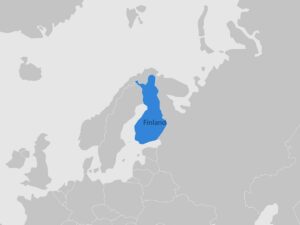
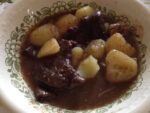
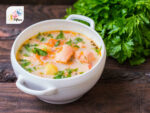
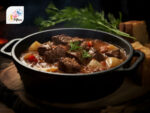
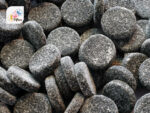
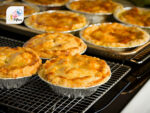
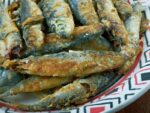


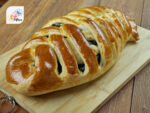
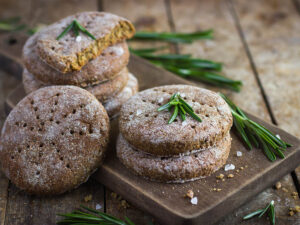
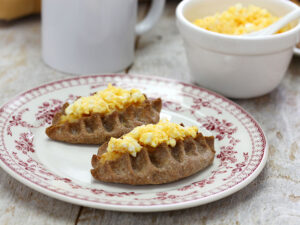
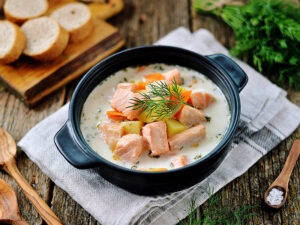
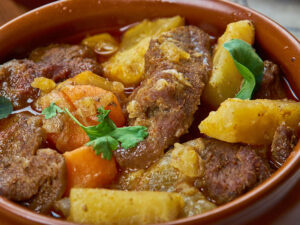

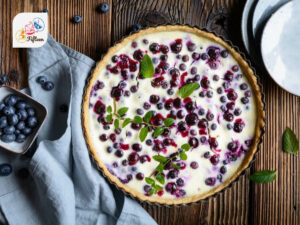
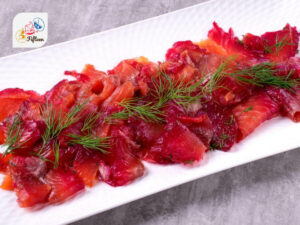
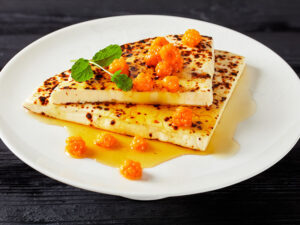
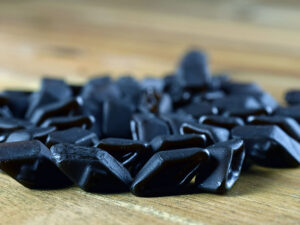
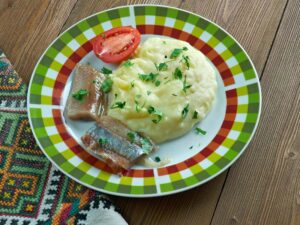
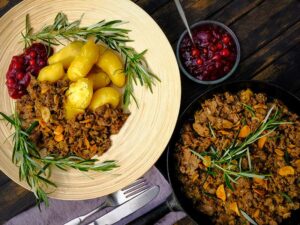
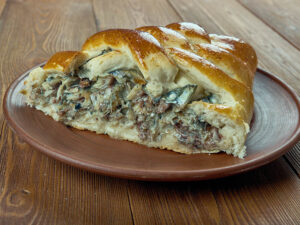
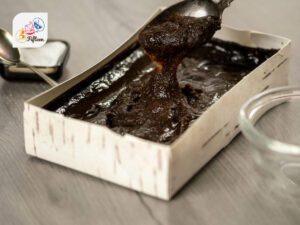
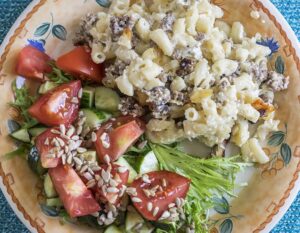
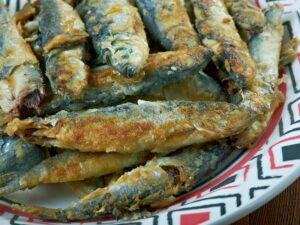

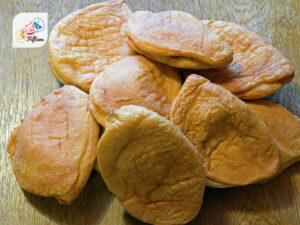
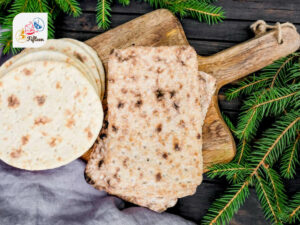
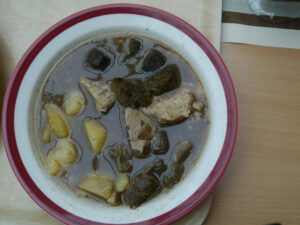
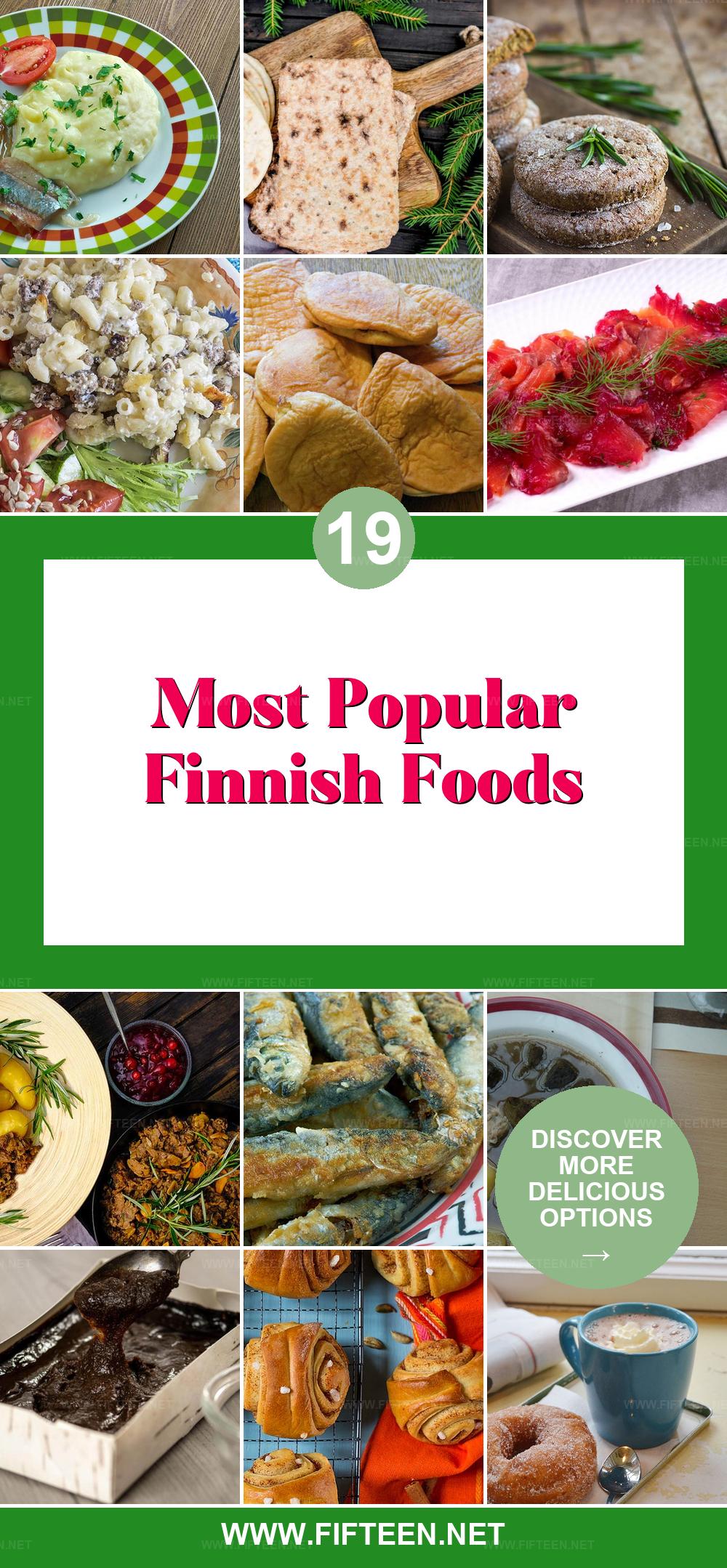
Jamie Scott
Editor in Chief, Senior Content Writer
Expertise
Home Cooking, Meal Planning, Recipe Development, Baking and Pastry, Food Editor, Cooking-video Maker, Western Food Evaluation Expert
Education
Le Cordon Bleu College of Culinary Arts
Local Community College, New York, NY
Jamie Scott is a skilled culinary expert and content creator specializing in Western cuisine. With over 15 years in the culinary field and formal training from Le Cordon Bleu, Paris, Jamie deeply understands how to blend nutrition with delicious flavors. His passion for cooking matches his commitment to making healthy eating accessible and enjoyable.
On Fifteen.net, Jamie brings a fresh perspective to classic dishes and beverages, offering readers insightful recipes, cooking tips, and a fresh view on meal planning that emphasizes taste, health, and simplicity.